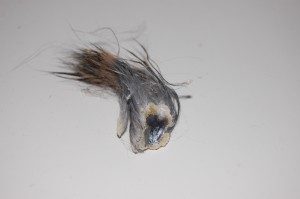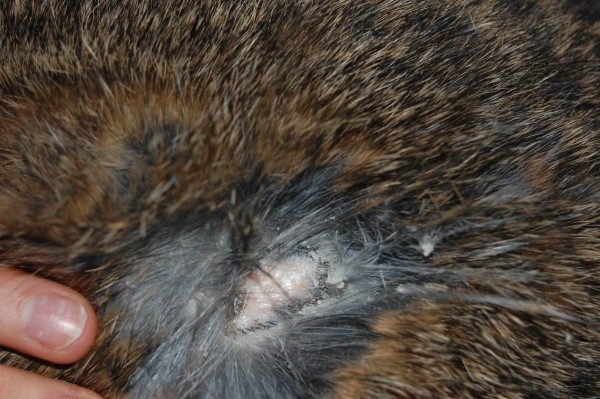Injection Necrosis
When medications are injected, they can sometimes damage the skin so severely that necrosis develops. A common cause of injection necrosis is Baytril, for example. The necrosis usually appears several weeks after the injection. A round, hard crust forms at the injection site, which eventually falls off once the skin underneath has regenerated. Afterward, only a hairless patch remains. Treatment is not necessary, as the area heals completely on its own.

Prevention of Injection Necrosis:
Antibiotics that are particularly likely to cause injection necrosis can be administered in a specific way to help prevent necrosis.
- Change the needle after drawing up the medication to ensure that no residues from the drawing process are present when injecting into the skin.
- Some medications can be diluted with NaCl, making them better tolerated by the skin. The veterinarian can provide information on this. This dilution should only be done shortly before the injection to prevent the medication from settling.





















